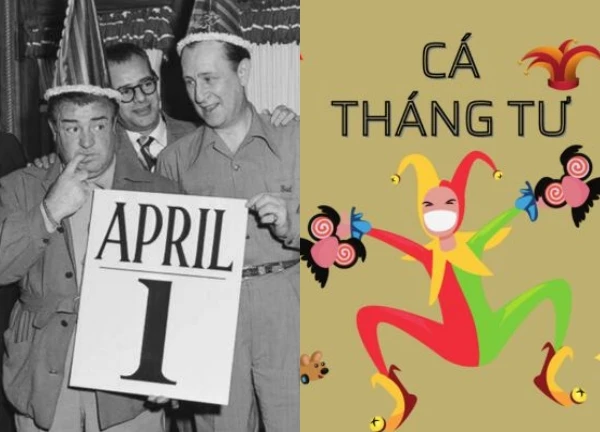The "Pyramid" at the bottom of the sea: Buried civilization or a joke of nature?

2 | 0 Discuss | Share
According to Dan Tri newspaper on April 10, 2023, there was an article titled: "The only ethnic group in China that speaks Vietnamese, eats fish sauce, and plays the monochord". Specific content:
"When in love, we take off our shirts and give them to each other. When we go home, we lie to our fathers and mothers. Ah ah ah ah, crossing the bridge, love, love, love, the wind blows away" - the voice blends with the sound of the ancient monochord, making anyone who hears it moved when they hear it on the other side of the border.
Seeing guests coming to her house, Mrs. To Tiet - a Kinh woman - shook hands and happily boasted: "This is a Vietnamese person. A Kinh person visiting another Kinh person!".
Although 500 years have passed, in the small fishing village of Wanwei (Jiangping town, Dongxing city, Guangxi province, China), many relatives like Ms. To Tiet still use songs to preserve their mother tongue and Vietnamese culture.
30 km north of Mong Cai border gate, Dong Hung city (China) appears with rows of high-rise buildings and bustling commercial centers. Here, Tam Dao fishing village is the only place where the Kinh people live. And every day they still use Vietnamese to communicate, their children are educated through textbooks in their mother tongue.
According to genealogical records, in the 17th century, a group of Vietnamese people from Do Son (Hai Phong) went to Tam Dao (China) to settle down and work as fishermen. At that time, the national language had not yet been invented, so all books and writing were in Nom script.
Initially, this land had 3 villages: Van Vi, Mu Dau and Son Tam, with less than 100 people and 12 clans: To, Do, Nguyen, Hoang, Vu, Bui, Cao, Ngo, La, Cung, Khong and Luong.
Later, thanks to the alluvial compensation, the three islands merged into the mainland and developed several other villages. However, the name Tam Dao remained intact. At the same time, the tribe of Vietnamese origin was recorded as the Kinh tribe along with 56 other ethnic groups of China.
After 500 years, Tam Dao currently has an estimated 20,000 Vietnamese people of the 9th and 10th generations. Although they no longer have any connection with their roots in Vietnam, they still preserve their identity and mother tongue through daily use.
Seemingly left behind by time, Van Vi fishing village appears with all the indigenous features with banyan trees, water wharves, and communal houses. In particular, right in front of the village gate, the local government has built a museum, preserving all the culture of the Vietnamese people to remind the descendants of the Kinh tribe of their origins.
Pictures of palanquin processions, ao dai, water pipes, jars, fishing nets, the story of Thach Sanh or specialties such as fish sauce, vermicelli, glass noodles, dried foods marinated with spices... made us emotional.
Entering the village, seeing a visitor from afar, an old lady over 80 asked: "Are you a Vietnamese?" Receiving a nod, the old lady smiled warmly. Although she had never heard of the place name Ho Chi Minh City, knowing that she was originally Vietnamese, she was still very proud.
At the door, Ms. To Tiet, with her fluent Vietnamese, immediately showed off to the family: "This is a Vietnamese person. A Kinh person visiting a Kinh person."
Ms. Tiet shared that her ancestors came to this coastal area to make a living more than 500 years ago. Although she has never returned to Vietnam to find her roots, she was able to listen and understand the Kinh language with her parents. Until the current generation of descendants, who have lived with the Han people and speak Mandarin, it has become difficult to maintain.
Besides language, the Kinh ethnic group in China still fully preserves the Vietnamese New Year culture. Especially for fishermen, September 6th is always the biggest festival for people to pray for favorable weather.
"Since my mother was in the village's art troupe, I have been exposed to the ancient monochord, bamboo flute, and singing traditional tunes. Every Hai Long Vuong prayer day, I will be in charge of playing and singing. The three islands hold ceremonies on three different days, helping the villagers flock there to have fun and pray for good luck," Ms. Tiet added.
Ms. Nuong (tour guide in China) said: "Tam Dao is currently the only place that still uses Vietnamese. Even traffic signs still have the national language for people to use.
Living here for a long time, I have met many Kinh people. They are very proud of their ethnicity, hospitable and have a high sense of pride in preserving their culture.
The Kinh people in Guangxi, China originated from Do Son - Hai Phong and Quang Ninh. Over 500 years, with more than 10 generations of living, the lives of the people here have changed positively. In addition to actively preserving the traditional cultural features of the nation, the Kinh people in Tam Dao are also a leading minority in economic development.
For example, the family of artisan To Xuan Phat, his children and grandchildren are currently focusing on seafood purchasing, and other jobs such as tourism and trading in border areas. Working in the sea alone, Mr. Phat's family has an income of about 50,000-70,000 yuan per month. Mr. Phat's spacious 2-storey house bears the mark of houses in Vietnamese villages, with a garden full of fruit, each season has its own fruit, and a row of pig and chicken pens for raising... This space becomes even more peaceful, strangely similar to Vietnam when the clear sound of the monochord is played.

2 | 0 Discuss | Share

2 | 0 Discuss | Share

3 | 1 Discuss | Share

5 | 0 Discuss | Share

4 | 0 Discuss | Share

2 | 1 Discuss | Share

2 | 0 Discuss | Share

4 | 0 Discuss | Share

2 | 0 Discuss | Share

3 | 0 Discuss | Share

3 | 0 Discuss | Share

2 | 1 Discuss | Share










2 | 1 Discuss | Report